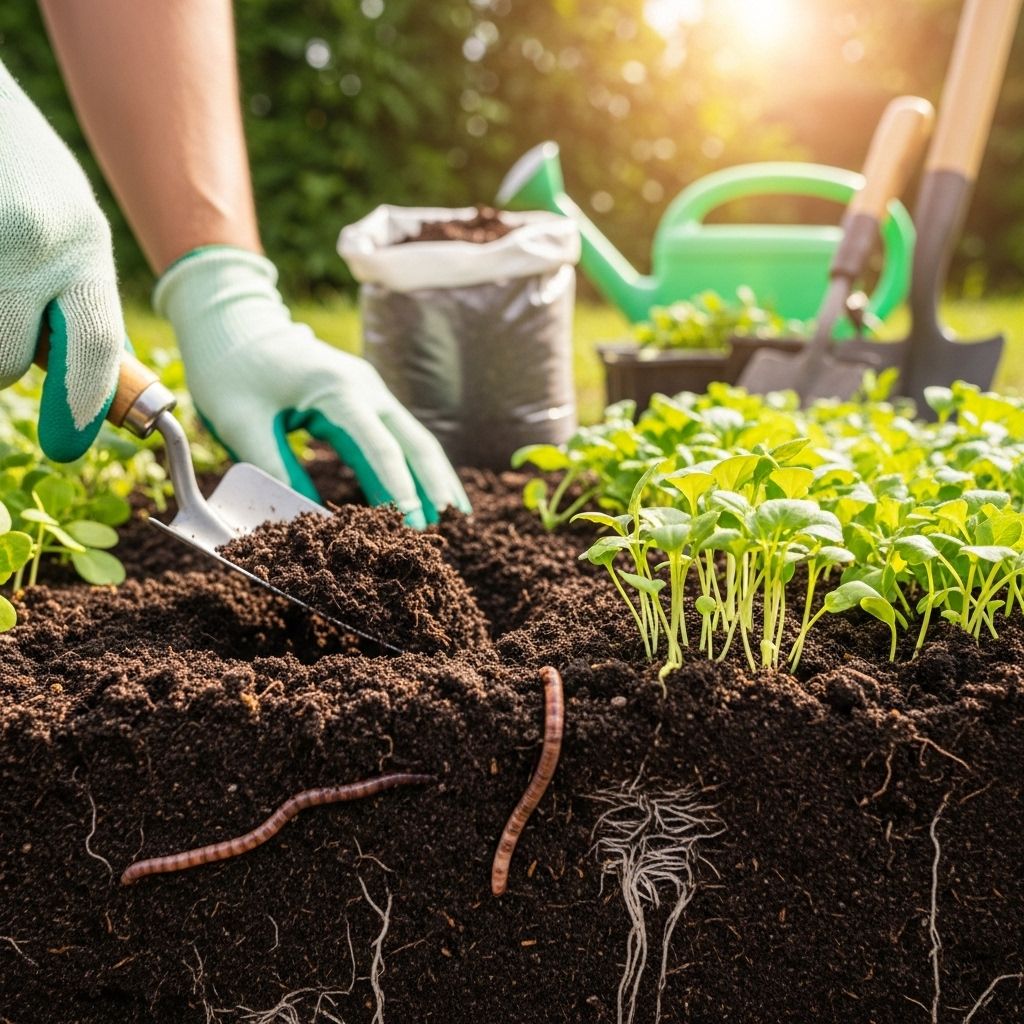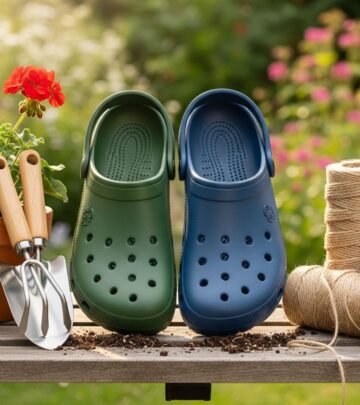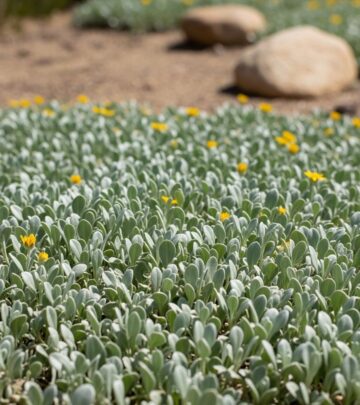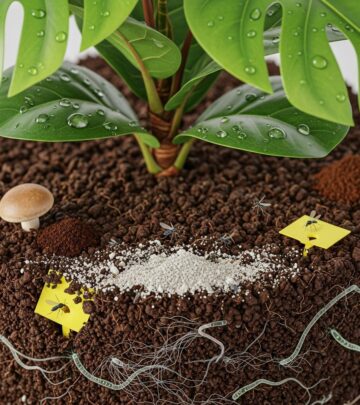Improve Garden Soil: 6 Essential Steps For Thriving Gardens
Unlock vibrant growth: Master garden soil preparation, discover soil types, and boost plant health with proven organic techniques.

Image: HearthJunction Design Team
The Essential Guide to Healthy Garden Soil
Every lush, thriving garden owes its success to one unsung hero: the soil beneath it. The foundation of a healthy garden lies not just in planting the right species but in understanding, nurturing, and preparing the earth they grow in. Whether you’re a first-time gardener or a seasoned grower, mastering the basics of garden soil will pay off in stronger plants, higher yields, and lasting beauty in your landscape. This comprehensive guide covers everything you need to know about your garden’s most vital resource—from soil types and pH levels to organic amendments and microbial life.
Why Soil Matters in Gardening
Soil is much more than just dirt. It is a living, dynamic ecosystem—an intricate mixture of mineral particles, organic matter, water, air, and billions of microorganisms. The health, texture, and composition of soil directly affect how plants grow, absorb nutrients, and resist disease. Well-prepared soil delivers:
- Optimal root growth and access to nutrients
- Proper airflow and water drainage
- A thriving environment for beneficial organisms
- Long-term productivity of your garden
6 Basics of Healthy Soil
- Know Your Soil Type
- Test the pH of Your Soil
- Amend with Organic Matter
- Enlist the Help of Microorganisms
- Mulch with Organic Materials
- Regular Soil Maintenance
1. Know Your Soil Type
Before you plant anything, identify your soil’s texture and composition. Dig a small shovel’s worth and examine its feel when moist:
- Clay Soil: Dense, sticky when wet, clumps together. Holds water and nutrients well, but drains poorly and compacts easily.
- Sandy Soil: Gritty, falls apart in your hand, quick to drain, often lacks nutrients.
- Silt Soil: Smooth, powdery, holds together well but can compact, impeding drainage and air flow.
- Loam: The ideal; crumbly texture, rich in organic matter, retains moisture and nutrients while draining well.
Each soil type comes with its own benefits and challenges.
| Soil Type | Texture | Benefits | Challenges | Ideal Plants |
|---|---|---|---|---|
| Clay | Dense, sticks together | Rich in nutrients, retains moisture | Poor drainage, compaction | Broccoli, cabbage, daylilies, roses |
| Sandy | Loose, gritty | Drains quickly, warms fast in spring | Low nutrients, dries out quickly | Carrots, potatoes, thyme, sedum |
| Silt | Smooth, powdery | Retains moisture, fertile | Easily compacted, poor drainage | Iris, willow, various annuals |
| Loam | Crumbly, balanced | Ideal for most plants | May need amending over time | Almost all vegetables, flowers, shrubs |
If your soil is poor or heavily compacted, building raised beds filled with well-balanced soil mixes provides a reliable solution.
2. Test the pH of Your Soil
The pH level measures how acidic or alkaline your soil is, on a scale from 0 (most acidic) to 14 (most alkaline), with 7 being neutral. Most garden plants thrive in soil that is slightly acidic to neutral (pH 6.0 to 7.0), but some exceptions exist—such as azaleas and blueberries, which prefer more acidic conditions.
How to Test Soil pH:
- Use a simple home pH test kit or electronic probe.
- Collect samples from different areas of your garden for an average reading.
- Adjust pH by adding lime to raise alkalinity or sulfur to increase acidity, always according to instructions and plant needs.
Common pH Adjustments
- Lime: Raises pH (makes soil less acidic), great for lawns and vegetable gardens with low pH.
- Sulfur: Lowers pH (makes soil more acidic), useful if soils are too alkaline for acid-loving plants.
3. Amend with Organic Matter
Adding organic material is among the most effective ways to improve any soil type. Organic amendments—such as compost, leaf mold, well-rotted manure, and shredded bark—break down to form humus, the nutrient-rich, spongy substance at the core of fertile soil.
- Humus improves texture and structure.
- Enhances water retention in sandy soils and drainage in clay soils.
- Slowly releases nutrients, fueling steady plant growth.
- Encourages earthworms and other beneficial soil life.
Aim for at least 5% to 10% organic matter in your garden beds for the best plant growth.
4. Enlist the Help of Microorganisms
Garden soil is alive, teeming with a vast array of bacteria, fungi, protozoa, nematodes, and earthworms. These soil organisms break down organic matter into nutrients that plants can use, protect roots from diseases, and improve aeration and structure.
- Bacteria: Fix nitrogen, making it available to plants.
- Fungi: Form mycorrhizal relationships, expanding root absorption.
- Earthworms: Aerate soil and create nutrient-rich castings.
You can foster a healthy soil ecosystem by minimizing chemical inputs, avoiding excessive tilling, and regularly adding compost and mulch.
5. Mulch with Organic Materials
Organic mulch (such as shredded bark, straw, or chopped leaves) offers several crucial benefits:
- Reduces soil erosion by wind and rain
- Moderates soil temperature
- Suppresses weeds
- Retains soil moisture
- Feeds soil life as it decomposes
Apply a 2-4 inch layer over garden beds, keeping mulch several inches away from plant stems to prevent rot. Over time, as mulch breaks down, it further enriches the soil beneath.
6. Regular Soil Maintenance
Soil health isn’t a one-and-done job. Over the years, as you grow and harvest plants, nutrients are removed from the soil. To maintain fertility:
- Top up with compost or well-rotted manure annually
- Rotate crops to prevent nutrient depletion
- Test pH and adjust as needed
- Avoid compacting or working wet soil
Special Soil Considerations
Improving Challenging Soil Types
- Clay Soil: Add coarse sand and organic matter to improve drainage and aeration. Avoid working it when wet, as this causes compaction.
- Sandy Soil: Add generous amounts of compost or well-rotted manure to increase moisture and nutrient retention.
- Silty Soil: Incorporate organic matter to reduce compaction and enhance structure.
- Peaty Soil: Add lime if pH is too low, and organic matter to improve structure and aeration.
- Chalky Soil: Use acidic organic amendments (peat moss, composted pine needles) to offset alkalinity and boost nutrient availability.
How to Prepare Garden Soil: Step-by-Step
- 1. Clear the Area: Remove weeds, rocks, roots, and debris.
- 2. Loosen the Soil: Use a spade or fork to turn over the top 8-12 inches, breaking up large clods.
- 3. Amend the Soil: Spread compost or aged manure evenly, then mix it in thoroughly.
- 4. Level and Rake: Smooth out any uneven surfaces to prepare for planting.
- 5. Water Well: Lightly moisten the soil to encourage settling before sowing seeds or transplanting starts.
Choosing Plants for Your Soil Type
Your soil type determines which plants will thrive most effortlessly. While almost any soil can be improved, it’s wise to select varieties well adapted to your natural conditions for the greatest success.
| Soil Type | Vegetables | Herbs | Flowers | Shrubs/Trees |
|---|---|---|---|---|
| Clay | Cabbage, broccoli, beans | Parsley, chives | Daylilies, asters, coneflowers | Roses, hydrangeas |
| Sandy | Carrots, potatoes | Thyme, rosemary | Sedum, yarrow | Pine, juniper |
| Silt | Peas, lettuce | Coriander, dill | Iris, poppy | Willow, dogwood |
| Loam | Tomato, lettuce, squash | Most herbs | Most annuals/perennials | Maple, oak |
Frequently Asked Questions (FAQs)
How do I know what type of soil I have?
Dig down about 6 inches and grab a handful. Squeeze it in your hand:
- Clay feels sticky and forms a ball.
- Sandy soil falls apart or feels gritty.
- Silt is soft, powdery, and smooth.
- Loam crumbles easily, neither too sticky nor too loose.
What is the fastest way to improve poor soil?
Incorporate 2-3 inches of quality compost or well-rotted manure and mix thoroughly into the top 8-12 inches of soil. Mulch with organic materials to prevent erosion and continue building up humus.
Does soil pH really matter for plants?
Yes. Most plants require slightly acidic to neutral soil, but some (like blueberries) need more acidity. Always test and adjust your pH for best results.
How often should I test my soil?
At minimum, test your soil every 2-3 years, or before starting a new garden bed. If plants show unexplained deficiencies or poor growth, test sooner.
Should I use raised beds if my soil is very poor?
Yes, raised beds can be filled with high-quality soil and organic matter, bypassing many issues with compacted, rocky, or contaminated ground.
Can I over-amend my soil?
It’s possible—avoid adding more than 4 inches of any amendment at once, and always mix thoroughly. Some soils (like clay) can become waterlogged if too much organic matter is added without attention to drainage.
Conclusion: Healthy Soil, Healthy Garden
Good gardening is rooted in great soil. By learning your soil type, testing and adjusting pH, incorporating organic matter, and fostering microbial life, you’ll build a sustainable, fertile foundation for vibrant plants—season after season. Remember: soil health is an ongoing process, but every improvement you make pays long-term dividends in beauty and productivity. Happy gardening!
References
- https://www.gardendesign.com/soil/
- https://barefootgardendesign.com/a-gardeners-guide-to-soil/
- https://www.thisoldhouse.com/gardening/91409/types-of-soil
- https://spottsgardens.com/guide-to-garden-soil/
- https://www.gardendesignacademy.co.uk/blog/designing-for-different-soil-types–how-to-choose-plants-that-will-thrive-in-your-garden
Read full bio of medha deb












